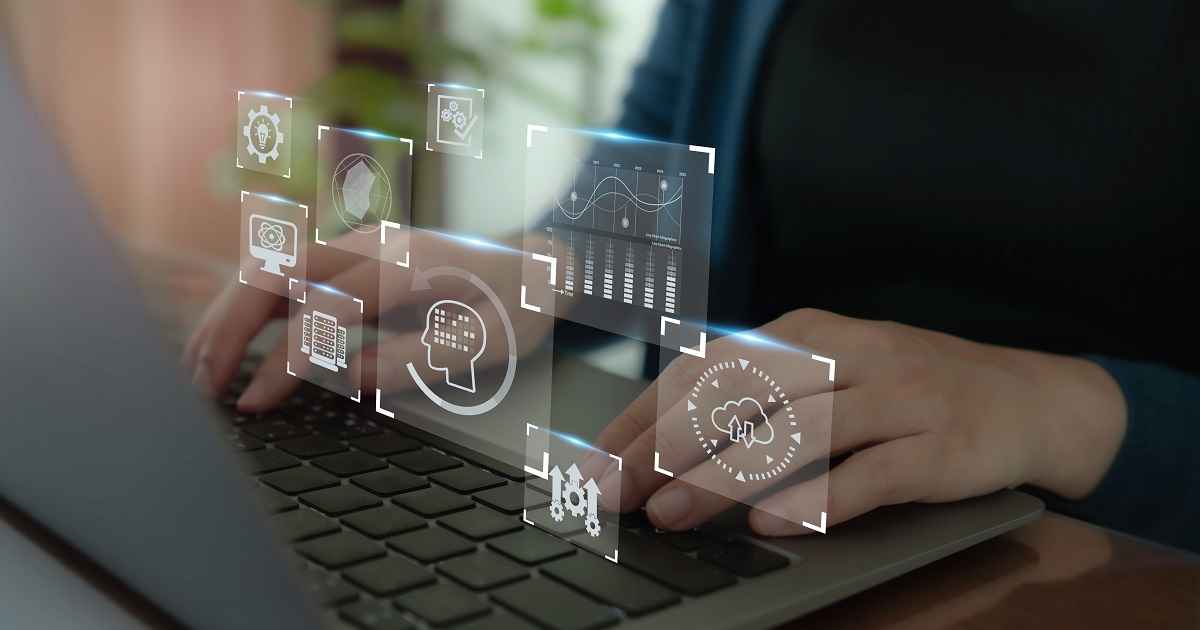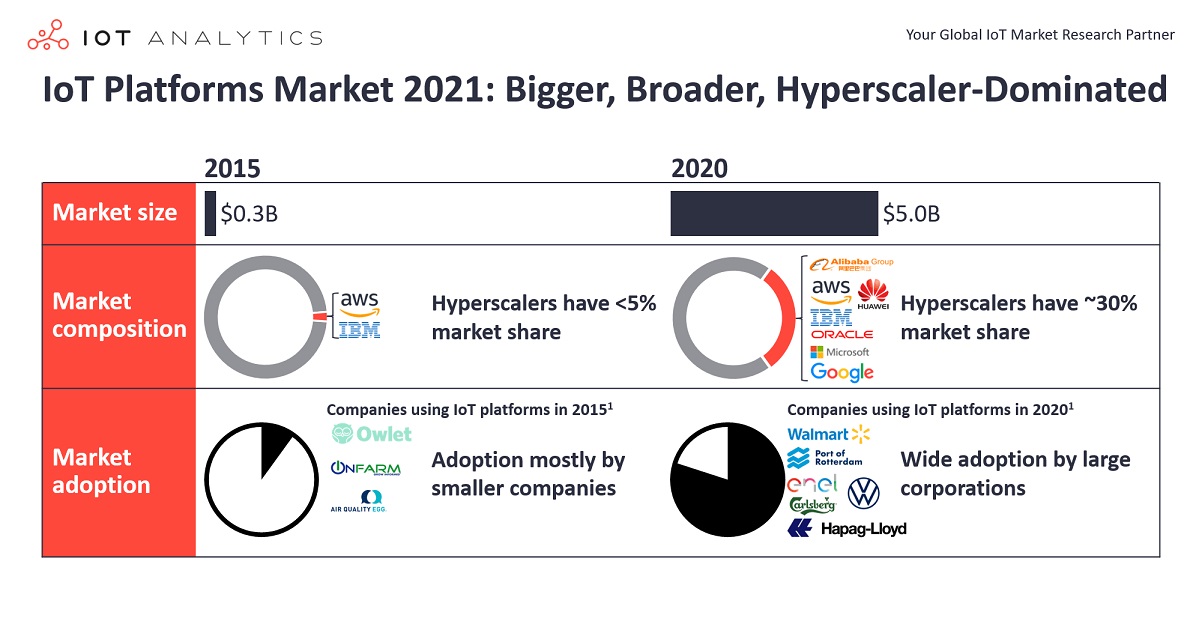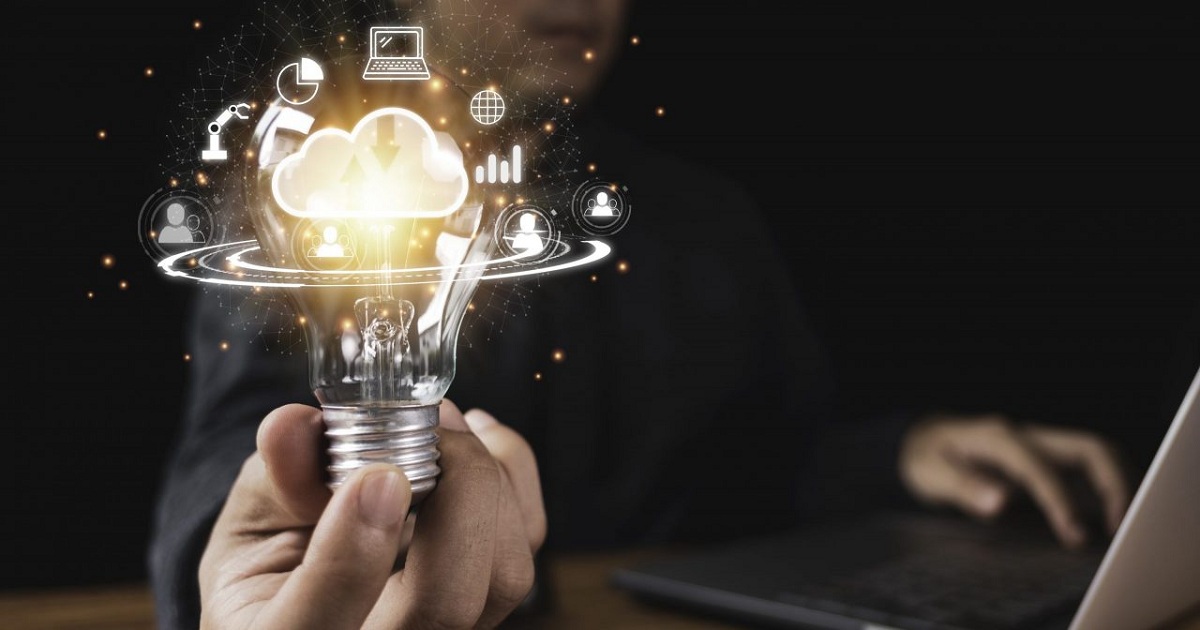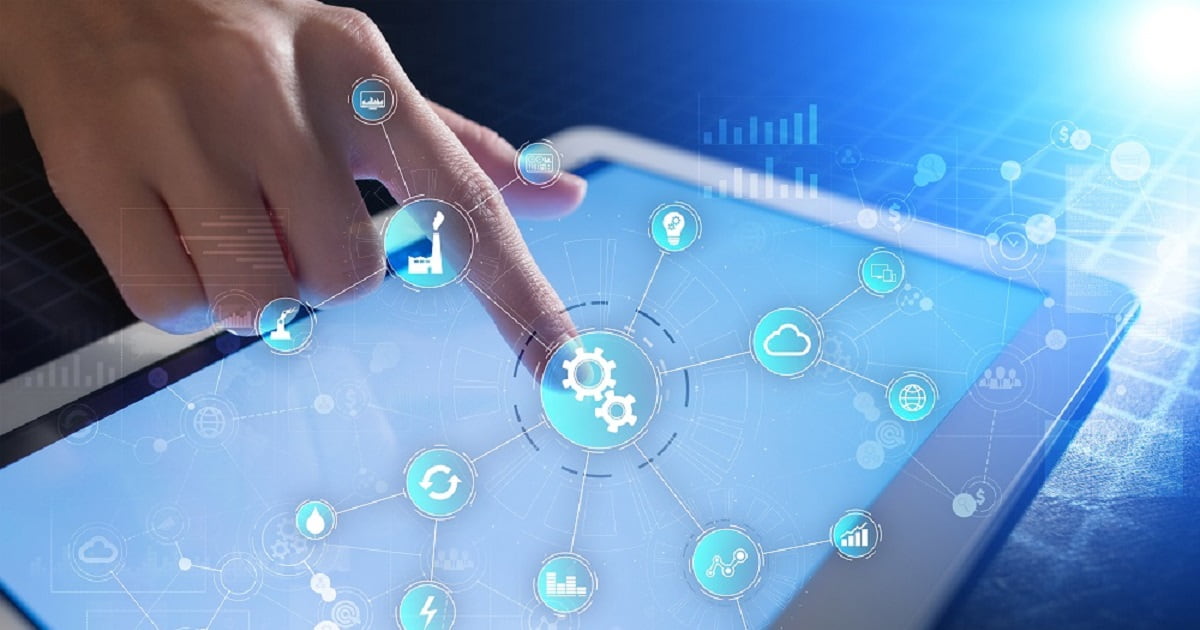
IoT Security
Article | June 28, 2023
Explore the emerging complexities of IoT data governance with 7 key challenges to tackle. Address data privacy, security, and ethical concerns, empowering your business for success in 2023 and beyond.
Contents
1 The Case for Maintaining IoT Data Governance
2 Challenges of IoT Data Governance
2.1 Lack of Organizational Commitment
2.2 Data Privacy Concerns
2.3 Lack of Endpoint Security for IoT Devices
2.4 Issues with IoT Device Authentication
2.5 Increasing Volume of Unstructured Data
2.6 Unethical Use of IoT Data
2.7 Inadequate Data Governance Protocols
3 Addressing IoT Data Governance Challenges
3.1 Security by Design
3.2 Awareness Initiatives
3.3 Standardized Data Governance Policies
4 Conclusion
1 The Case for Maintaining IoT Data Governance
The growing use of IoT devices across various industries has caused a surge in data volume. Most of these devices store sensitive company data, which plays a crucial role in business operations but can have dire consequences if it falls into the wrong hands. Thus, companies need to understand what is IoT governance and its implementation to safeguard sensitive data from unauthorized access and malicious exploitation.
2 Top Challenges in IoT Data Governance for Businesses
2.1 Lack of Organizational Commitment
Organizational commitment is essential for effective IoT data governance. There needs to be a clear purpose and goals regarding data governance that are communicated to all stakeholders. Not focusing on organizational commitment can result in a lack of alignment between the organization's goals and the IoT data governance strategy, as well as uncertainty about ownership and accountability for data governance across the organization.
2.2 Data Privacy Concerns
Ensuring data privacy is a significant concern when implementing IoT data management to maintain IoT data governance security. With the vast amount of data generated by IoT devices, there is an increased risk of personal and sensitive data being compromised. Therefore, it is crucial to identify potential vulnerabilities, mitigate the risk of data privacy breaches in IoT environments, and anonymize user data for consumer devices.
2.3 Lack of Endpoint Security for IoT Devices
IoT devices are often designed with limited processing power and memory, and as such, many connected devices do not have built-in security features. This makes them attractive targets for hackers seeking to access confidential data or disrupt operations. Without proper endpoint security measures, IoT devices can be compromised, leading to data breaches, network downtime, and other security incidents that can compromise the entire system's integrity.
2.4 Issues with IoT Device Authentication
When IoT devices are designed without proper authentication mechanisms, it can be challenging to verify their identities. This results in possible unauthorized access, data breaches, and other security incidents. To supplement IoT data management practices, companies must implement secure authentication protocols specifically designed for IoT environments, such as device certificates, digital signatures, and multi-factor authentication, to maintain IoT data governance.
2.5 Increasing Volume of Unstructured Data
IoT devices generate vast amounts of data in various formats and structures, including text, images, audio, and video, which can be difficult to process, manage, and analyze. This data is often stored in different locations and formats, making it challenging to ensure quality and consistency. Moreover, this flood of unstructured data can contain sensitive information that must be protected to comply with regulations and standards. For effective IoT data governance, it is necessary to implement data classification, metadata management, and data quality management to make sense of unstructured data.
2.6 Unethical Use of IoT Data
IoT devices collect data that can be sensitive and personal, and misuse can lead to various negative consequences. Data from IoT devices can be used to develop insights, but it must be handled carefully to avoid privacy violations, discrimination, or other negative consequences. Ensuring data ethics requires organizations to consider the potential impacts of their data collection and use practices on various stakeholders. This involves addressing issues such as data privacy, data ownership, transparency, and bias in IoT data analytics.
2.7 Inadequate Data Governance Protocols
Without proper data governance protocols, IoT data may be inaccurate, incomplete, or difficult to access or analyze, reducing the effectiveness of IoT systems and limiting the potential benefits they can provide. Additionally, inadequate data governance protocols can lead to security and privacy vulnerabilities, potentially exposing sensitive data to unauthorized access or theft. This can result in legal and regulatory penalties, reputational damage, and a loss of customer trust.
3 Addressing IoT Data Governance Challenges
3.1 Security by Design
This approach involves integrating security and governance considerations into the design and development of IoT systems from the outset. This helps minimize vulnerabilities, prevent breaches that may compromise the confidentiality, integrity, and availability of IoT data, and help maintain IoT data governance. In addition, by prioritizing security in the design phase, organizations can implement security controls and features tailored to their IoT systems' specific needs, which can help prevent unauthorized access, manipulation, or theft of IoT data.
3.2 Awareness Initiatives
IoT data governance challenges can arise due to an improperly trained workforce that may not recognize the purpose and benefits of data governance practices. Awareness initiatives can help organizations develop a culture of security and privacy. These initiatives can educate employees and stakeholders about the risks and best practices associated with IoT data governance, including the importance of data security, privacy, and ethical considerations. By raising awareness of these issues, organizations can promote a culture of responsible data management, encourage stakeholders to adhere to data governance policies and procedures, and reduce the risk of human error or intentional misconduct that could compromise IoT data.
3.3 Standardized Data Governance Policies
Collaboration between local, regional, and federal governments and businesses is essential to establishing frameworks for implementing IoT and related technologies within their jurisdictions. Cooperation between governments and enterprises is crucial for implementing a standardized IoT data governance policy. This will protect end-users by mandating basic standards in procurement processes and creating regulations and guidelines that promote responsible data governance.
4 IoT Data Governance: Future Outlook
Data is one of the most valuable resources for organizations today, and addressing the problem of IoT data governance will ensure that the IoT of enterprises is used effectively and responsibly. Straits Research reported that the worldwide data governance market had a worth of USD 2.1 billion in 2021 and is projected to reach an estimated USD 11.68 billion by 2030. IoT devices are a key driving factor behind the growth of the data governance market, and as the amount of data generated and the number of devices grows, so will the complexity of data governance. By maintaining strong data governance policies and tracking changes in policies and best practices, businesses can ensure compliance and maintain trust in the long run.
Read More

IoT Security
Article | July 17, 2023
5 years ago, when we forecasted that the IoT platforms market would have a 5-year compound annual growth rate (CAGR) of 35%, we wondered if our growth projection was unrealistically high.
5 years later, it has become apparent that the forecast was actually too low. The IoT Platforms market between 2015 and 2020 grew to be $800 million larger than we forecasted back in early 2016, resulting in a staggering 48% CAGR.
Comparing what we “knew” back in 2016 to what we know today provides some clues as to why the market exceeded expectations so much. 5 years ago, no one really knew what an IoT platform was, let alone how big the market would be, which business models would work, how architectures would evolve, and which companies/industries would adopt them. The only thing that was “known” was that the IoT platforms market was a billion dollar “blue ocean” opportunity ready to be captured by innovative companies.
Read More

IoT Security
Article | June 27, 2023
If you’re struggling with creating a value proposition in volatile markets, you’re not alone. According to Neil Patel, 40% of marketers struggle to acquire leads by traditional marketing methods. As competition grows in each industry, even fairly monopolistic markets like tech are seeing rising competition in all areas.
To combat market uncertainty, as well as stand out amongst your competitors, you need a market strategy that not only offers a direction but actively targets your goals. A market strategy is your go-to plan when things get rough and it is a map for when the waters are calm. Moreover, marketers with a documented strategy are 313% more likely to report success.
We’re sure you already have a market strategy that is just right for you. But have you considered if it can be refined further? Thanks to emerging technologies like IoT, we now have access to the most mundane customer decisions that are taken on a day-to-day basis. This data is your ticket to a better market strategy without having to spend a bomb.
This is how you can refine your market strategy with the help of IoT.
Data-driven Decisions
The Internet of Things has offered us insurmountable amounts of consumer data. A caffeine brand can now access information such as what time consumers have coffee, whether it is at home or office, what flavors they prefer, how much they’re willing to spend on coffee, and what other alternatives they consume. This kind of data, collected on an IoT device such as a coffee machine, is instrumental in making marketing decisions. If you know that your consumer prefers to have coffee at work in peace rather than in a rush at home, you can target offices in the area with your product rather than targeting individual consumers.
IoT offers you the right information to make the right decisions. But you can also leverage this data to drive your market strategy. In the above example, the marketing team can account for campaigns geared towards workplaces based on the available data in the budget. Data-driven strategies prove to be more effective than otherwise, and as marketers, you must absolutely leverage any IoT data that may be relevant.
Respect your Customers
While IoT offers marketers a truly astounding amount of data, not all users are aware of what data is being tracked. This raises concerns for privacy and security among the users. Even though most of the users waive their rights to withhold the information when signing into an app or wearables software, they are not always comfortable sharing certain data.
As marketers, it is important to keep your practices ethical and legal. Using consumer data may be completely legal, but it is best not to offend your customers by overt use of data that they aren’t comfortable sharing. Make sure that the usage of data in marketing campaigns and strategy is limited to what data has been consciously shared by your consumers. This will bolster your goodwill, as well as make your customers trust your brand.
Offer Valuable Solutions
With the advent of Big Data and AI technologies, the internet of things is turning over a new leaf. As there is a vast amount of data that can be processed fast with AI, marketers can now target individuals rather than households or groups. With precise data available over consumer decisions and actions, it is possible to know if there are any unlikely customers that you have been ignoring so far.
IoT allows you to not only target these customers but also solve their problems. If we continue the caffeine example, the connected coffee machine can tell you when the coffee is about to be over, this can send you reminders to buy coffee, or in case of further automation, place an order on Amazon on your behalf. These solutions can be now hyper-personalized to suit individual needs through IoT.
IoT Based Campaigns
Your market strategy will have to account for campaigns throughout the year, but if you’ve noticed closely, the only marketing campaigns that gain significant traction are the ones that have a ‘wow factor’. A lot of marketers mistake the wow factor to be a subjective preference that customers have but it couldn’t be further from the truth. The wow factor is simply the effect produced when a business goes above and beyond to meet customer needs. IoT offers us the resources required to manufacture the wow factor in every single campaign.
A great example of this phenomenon is beacon marketing. Beacon marketing is considerably new in the marketing industry and uses Bluetooth technology to transmit information to nearby mobile devices. It is heavily used in retail across the globe and giants like Target and Walmart are already using the technology to market its services. Walmart places beacons in its lights across its stores and sends offers to its customers based on their location. It not only personalizes the shopping experience, but also saves a large amount of electricity bill for its stores.
Target Existing Customers
Many times, in a bid to appease new customers, marketers often forget about their existing customers. Your existing customers already know you, have tried your product or service, and are clearly interested in the product. A good product or service is often enough to keep the customers returning, but with the current levels of competition, customers often find themselves wondering if they should try new things. As a marketer, all you need to do is deter your existing customers from straying. You can do this by either providing an unparalleled service, which is quite unlikely in today’s market, or you give them a reason to stay.
Thankfully, targeting existing customers is much easier than targeting new ones. You already have their data over their preferences and habits. If you know that a certain firm updates their applications every second quarter, you can send them offers just before the second quarter starts and remain fresh in their memories when they decide to make the decision.
Allergy medication Zyrtec leveraged IoT when targeting their existing customers with a voice-enable application. Its users could just ask the application about the daily allergens and pollutants in their area so they could prepare ahead. The app offered a powerful solution to its users while making great use of its brand image and retaining almost all of their existing customers.
Leverage New Technologies
We have already discussed several complementary technologies to IoT that can help you make the most out of your market strategy. AI and Big Data are some of the strongest allies for IoT that can help change the norms across industries. But even limited technologies like voice-enabled applications, QR scanners, beacons and so can open up a lot of opportunities for marketers.
Consider adopting some of these technologies such as geofencing which are inexpensive and effective at the same time. Burger King is a great example of using geofencing for marketing. Geofencing is a technology wherein you can transmit messages or information to mobile devices within a certain area. Burger King set up their geofences across all McDonalds in the UK and as soon as anyone entered within a 500 m radius of a McDonald’s outlet, they received Burger King coupons and directions to the nearest store.
Case Studies
There are a lot of examples of IoT being used to enhance strategies or campaigns. Some of these examples are given below.
Diageo, a whisky brand in Brazil innovatively used IoT to run a father’s day campaign. They encouraged men to buy whisky for their fathers and placed a QR code on their bottles. Once the bottle was received, the fathers could scan the code which would play a personalized father’s day message by their sons. This concept was so loved by people in Brazil that Diageo saw a 72% sales uplift in the two weeks leading up to Father’s Day.
South East Water, CRM leveraged IoT by building an end-to-end IoT ecosystem powered by IBM’s Maximo. This helped them roll out an app that offered near real-time insights into customer requirements for over 80 engineering teams. This alone helped them ensure higher customer satisfaction and accelerated access to critical reports by 99 percent!
Uber and Spotify rolled out an IoT campaign together wherein you could access your Spotify playlists through the Uber app and once you were in an Uber, you could play whatever you liked through the app and it would play on the car’s speakers. This increased customer satisfaction for both Uber and Spotify users.
There are several examples of using IoT in marketing campaigns, and there is never a dearth of ideas. However, in order to appeal to your unique customer base, you need to innovate your product with IoT.
Frequently Asked Questions
What is the IoT strategy?
IoT Strategy refers to an organization’s strategy to inculcate IoT in their business, whether as a marketing tool or as an integral part of the process.
How does IoT affect the marketing industry?
IoT offers a lot of insights and resources to marketers which helps them target their customers better and optimizes any marketing efforts, thereby effectively obliterating traditional marketing practices.
What is the best internet of things marketing strategy?
There is no one IoT marketing strategy that fits all businesses. Each business needs to identify its customer requirements and strategize accordingly.
{
"@context": "https://schema.org",
"@type": "FAQPage",
"mainEntity": [{
"@type": "Question",
"name": "What is the IoT strategy?",
"acceptedAnswer": {
"@type": "Answer",
"text": "IoT Strategy refers to an organization���s strategy to inculcate IoT in their business, whether as a marketing tool or as an integral part of the process."
}
},{
"@type": "Question",
"name": "How does IoT affect the marketing industry?",
"acceptedAnswer": {
"@type": "Answer",
"text": "IoT offers a lot of insights and resources to marketers which helps them target their customers better and optimizes any marketing efforts, thereby effectively obliterating traditional marketing practices."
}
},{
"@type": "Question",
"name": "What is the best internet of things marketing strategy?",
"acceptedAnswer": {
"@type": "Answer",
"text": "There is no one IoT marketing strategy that fits all businesses. Each business needs to identify its customer requirements and strategize accordingly."
}
}]
}
Read More

Industrial IoT
Article | December 15, 2021
2022 looks bright for power optimization! The vibrant research and development in Internet of Things (IoT) is fueling the expansion of wireless monitoring solutions and enabling giant leaps in terms of low-power design. A longer lifetime for your batteries, and thus for your device, is a dream about to come true.
We have gathered some of the most notable power optimization trends that are getting us all excited for 2022…
5G, the next era of broadband cellular networks will offer improved power saving capabilities
The next wave of wider 5G cellular technology is designed to support various new highly challenging industrial use cases. These usually require increased hardware complexity and more processing, together with higher processing power. These requirements can raise power consumption quite significantly.
Smart power consumption and energy efficiency are thus becoming keys for the success of these applications and 5G technology.To that extent, 5G New Radio (NR) has progressed swiftly. The new 3GPP™ release is designed to significantly improve the performance, flexibility, scalability, and efficiency of current mobile networks. Improved power saving features now allow IoT developers to get the most out of the available battery capacity. This could make all the difference for new IoT use cases and efficiencies.
A new generation of sensors are optimized for low power technologies
New families of ‘breakthrough’ sensors, based on anultra-low power architectureare optimized for use in compact wireless devices. These sensors offer a richer set of functionalities and can be combined to create new insights (sensor fusion). One of the greatest challenges facing developers of these small form-devices is power consumption. Aware of these limitations, hardware manufacturers have been working hard to address them. Integrated circuit designs and techniques are now using less power while smart processing capabilities are enabling the sensors to intelligently manage sensing functionalities,delivering ultra-low power performance for best-in-class power consumption. The use of advanced Low Energy Bluetooth and wireless protocols (e.g. Bluetooth Low Energy (BLE) or ZigBee Green Power) also allows the transmission of data to the gateway more efficiently compared to prior solutions, opening new possibilities for developers.
Big Data, Analytics, Machine Learning and Edge computing are picking up the pace
The explosion in data volume and diversity is forcing organizations to rethink the way they process the information. Indeed, capturing, sending and processing the information in the cloud can be taxing for the network, the storage and the computing infrastructures which demands more processing power, hence the need to keep the transmission window as short as possible.
This has led to the development of advanced devices capable of collecting, processing and storing data autonomously before the data is sent to the servers. This concept is calledEdge computing. By reducing the need for data to be streamed through the networks, diminishing computing and processing costs,Edge computing contributes to optimizing power performance, whilst delivering quality data in a more sustainable way.
The rise of DevOps and new IoT Device Management platforms are contributing to better efficiency and better devices
The rise ofDevOpshas been swift. Derived from Development and Operations, ‘DevOps’ teams are responsible for making sure that the infrastructure is being maintained properly.With the help of IoT Device Management platforms—which are a central part of today’s IoT ecosystems— DevOps teams can better manage, scale and operate their fleet of devices remotely and reduce long-term operational costs.One of the areas that benefits from the rise of DevOps implementation is power supply optimization, as more efficient protocols such as Lightweight Machine to Machine (LwM2M) allow for device and battery monitoring, remote device actions and faster communication.
Harvesting technologies are becoming more effective
Power harvesting technologies include processes where energy from ambient sources such as the sun, temperature, movement or wind, is captured and stored to power wireless autonomous devices. Now gaining experience,harvesting technologies can exploit natural resources better than ever before.
As a result,the gap between the power requirements of embedded systems and the energy generated by energy harvesting systems is finally closing. Industrial applications for these technologies are still very limited, but coupled to efficient rechargeable batteries, they can present new opportunities for devices deployed in wild remote areas.
Power optimization tools are becoming increasingly exhaustive and reliable
Battery optimization is everyone's business and needs to be considered throughout the overall system performance analysis, from prototyping to deployment and on toward maintenance cycles.
Several innovating tools haveappeared on the market over the past few years and developers have now access toa rich ecosystem of tools to analyze their overall system performance.
Wisebatt for Saft for example can help creating a virtual prototype and simulate its consumption.Deutsche Telekom’s IoT Solution Optimizergoes even further. You can model the complete system to identify potential energy consumption issues or leaks. The system can not only recommend the right combination of power saving features based on your use case, but also can help you visualize how communication payload size, protocol use and communication frequency impact your battery life.
When at the prototype stage,Qoitec Otii solution measures in real time the consumption of your device at various temperatures, up to the measurement of the firmware and hardware operations without the need for expensive testing. These tools are constantly enhanced and improved to deliver better analysis and more accurate data.
With an increased awareness from IoT developers of the stakes of power consumption and the growing rate of low-power innovations, batteries are now able to outlive the devices they’re in. This opens the doors tomany new markets and applications and above all to more sustainable consumption patterns. When we told you the future looks bright, we weren’t joking!
Read More